Louis Dandurand doesn’t have any illusions about setting the world on fire with his bindings, let alone the tele tribe, but he has persevered nonetheless and created a litter of boot chompers worth serious consideration. About the only thing they don’t offer is safety release. Though that sounds ominous to an alpine skier, most pinners know that with a free heel you don’t need that release but rarely and, knock on wood, many of us have gotten away without it for several decades. So, while it may seem cavalier, I’m in the camp that a safety release (for tele gear only) is overrated. Please don’t confuse that with the universal desire for avy release, or an ejection trigger. Choices Choices
Going into the Thirteen-14 season Tele Bulldog has spawned quite a litter of pups since its inception back at the dawn of the new millenium. The stainless steel, unibody construction of the second generation Lite Dogz has become the genetic building block leading to the current generation of Spike bindings. It is a whole family of tele dogs, that range from Spike Lite, the ultimate step-in 3-pin binding to fraternal twins Spike XT and NT with a range of single or dual spring cable assemblies with adjustable pivot locations and a choice of three spring rates. The XT fits duck-billed boots, NT for the symmetrically shaped new tele norm kickers.
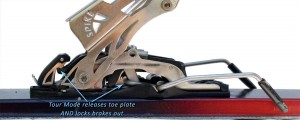
Switching to tour mode with brakes takes extra effort to not only keep the toe plate free, but to also keep the brakes retracted.
Weight
Weight on Spike varies depending on what spring configuration you go for. The basic toe piece with brakes weighs in around a pound per foot with brakes. A single tube spring assembly adds another 12 ounces with a climbing post, and yet another 10 ounces for the dual tube version. It can attach to one of seven positions with an equivalent range of power from HH#2 to HH#5+ if you also double the tubes and use stiffer springs.
Ahhhh – Step-In Convenience
Unlike any other cable binding, you still just step-in to add turning tension, no need to bend over to flip the heel lever up. There is a simple heel block at the back of the tube shaped to fit into the heel groove of a tele boot. With the right position, you simply step down, the spring stretches to allow it to push past the heel and snugly into the groove.
Getting out takes a bit more thought. First, push down on that heel block to pop it out of the groove, freeing your heel. Then press down on the front switch and lift your heel even further to lever the toepiece open and then slide your toe out. You’ll probably step back in to the heel while pushing on the front release lever, but a bit of practice cures that.
Downhill Control
In downhill mode the binding simply rocks, solidly adding power to your edges when you need it most, at speed and on ice. As with any active binding, it won’t completely cure bad habits, but it can help with balance and will make a decent skier tele better. The single tube, medium strength Spike XT I tried felt like a HH#3, maybe a 3+. It didn’t break any records, but few need or want more tele resistance than that anyway.
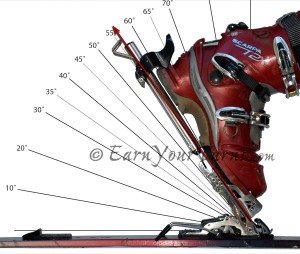
Plenty of ROM to allow snap kick turns on sharp switchbacks, and a free pivot for breaking trail in deep fluff.
As warned, tour mode was a bit of a bugger to switch to, but once in position the binding delivers a more than adequate 55°+ range of motion. You can modify the toepiece to allow even more angular range, but 55°+ is plenty enough for jack knife switchbacks. I was concerned that there was noticeable friction between the side walls of the toeplate and the baseplate, but your legs don’t notice when skinning, and if you’re concerned a lil’ dab of grease between the surfaces can’t hurt. Over time you may notice that the touring pivot is in front of pin line. Not just a little, a full 30mm, no less. It tours better than the NTN Freedom because it has less resistance, but on a long climb it isn’t as efficient as an O1 where the pivot is directly under the toe, not in front.
Mounting
It should be noted that there are detailed directions for assembling Spike and you may need to read them. Mounting the Spike Blade version is fairly simple, but adding brakes does require more than rudimentary mechanical skill. If you want brakes and a tour switch you had best slow down and read the detailed instructions provided to make sure you assemble the pieces in the right order and positions.
Conclusion
So who is this system for? By and large it’s for telemarkers who insist on step-in convenience and prefer the flex of a binding that bends a boot from the heel. It helps to be mechanically inclined, or be willing to tip a good ski mechanic an extra Jackson with a 12 pack for mounting these. Bring whatever boot you have and Spike will hold it tight while you dance the tele delight. You can get as picky as you want when it comes to picking the mix of spring components, but odds are you’ll want a fully outfitted Spike so you can follow your fancy whatever slope you find yourself on, whether breaking trail or riding lifts.
Burnt Mountain Designs
Spike NT/XT
MSRP: $265
Weight/pr: 3 lbs., 5.2 oz. (1.5 kg)
© 2013
More notes from ‘anonymous’ reviewers on the next page.
Pages:
- 1
- 2

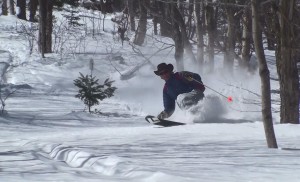
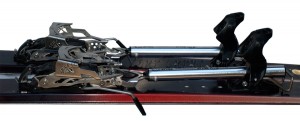
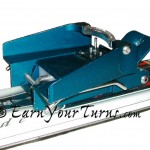
6 pings
[…] that control – Rottefella’s NTN Freedom, Freeride, or Burnt Mountain Design’s Spike, or the Dynafit inspired Telemark Tech […]
[…] Brnt Mt. Spike XT […]
[…] is much better than the Freeride, but still did not have as much range and was not as smooth as the NT Spikes I have on my other […]